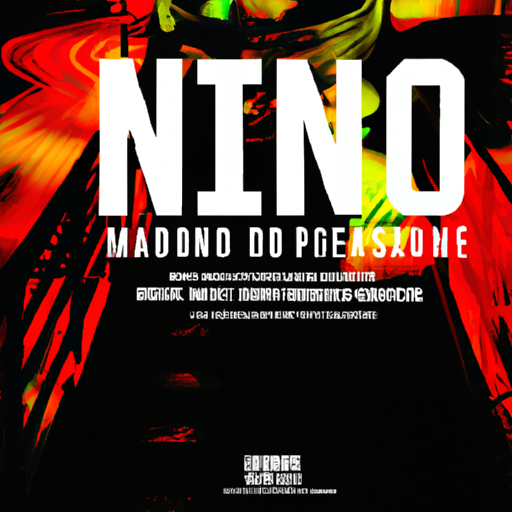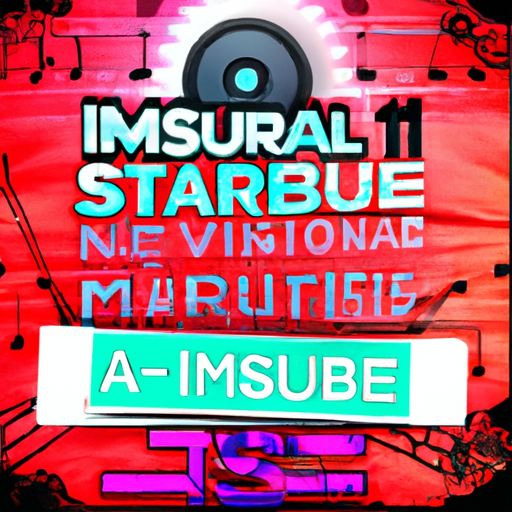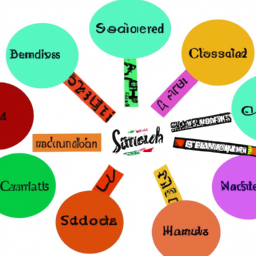In this article, you will get to learn all about Miami’s vibrant and diverse music scene. From the Latin beats that fill the air to the EDM festivals that make the city come alive, you’ll discover the various genres and flavors that make Miami’s music scene so unique. We’ll also explore the iconic venues and clubs where the magic happens, as well as the local artists that are making waves in the industry. So get ready to dive into the rhythmic world of Miami’s music scene and discover all it has to offer. Miami’s music scene is vibrant and dynamic, constantly evolving and adapting to new influences and trends. With a rich history deeply rooted in Latin music and a diverse range of genres and styles, Miami has become a major hub for musicians, artists, and music enthusiasts from all over the world. From iconic music venues to annual festivals and a thriving underground scene, Miami offers a plethora of opportunities and experiences for music lovers. In this article, we will delve into the history, genres, influential artists, collaborative culture, supportive infrastructure, economic impact, challenges, and opportunities that shape Miami’s music scene.
Early Influences
Miami’s music scene has been influenced by a variety of factors throughout its history. One of the earliest influences on the city’s music culture was the influx of Cuban immigrants in the 1960s, bringing with them the sounds of Afro-Cuban music, mambo, and salsa. This led to the emergence of Latin music as a significant part of Miami’s musical identity.
Emergence of Latin Music
Latin music quickly gained popularity in Miami and became an integral part of the city’s cultural fabric. Artists like Celia Cruz, Gloria Estefan, and the Miami Sound Machine played a significant role in expanding the reach of Latin music beyond the Latinx community. Their fusion of Latin rhythms with pop, dance, and rock elements created a unique sound known as “Miami Sound,” which played a crucial role in shaping the city’s music scene.
Impact of Miami Sound Machine
The success of Miami Sound Machine catapulted Miami into the mainstream music industry in the 1980s. Led by the charismatic and talented Gloria Estefan, the band achieved international fame and popularized Latin music worldwide. Their hit singles like “Conga” and “Rhythm Is Gonna Get You” showcased the infectious rhythms and energy of Miami’s music scene, attracting a diverse audience and paving the way for future Latinx artists to make their mark.
Current Trends
Today, Miami’s music scene continues to thrive with a diverse range of genres and styles. Latin music remains a dominant force, with artists like Pitbull and DJ Khaled carrying on the legacy of Miami Sound Machine. The city is also at the forefront of the electronic dance music (EDM) scene, hosting renowned festivals like Ultra Music Festival and attracting top DJs and producers from around the world. Additionally, hip hop, rap, reggae, rock, and alternative music have all found their place in Miami’s music landscape, reflecting the city’s multicultural influences and diverse artistic expressions.

Venues and Festivals
Miami boasts a plethora of iconic music venues that contribute to its vibrant music scene. From the historic Fillmore Miami Beach at the Jackie Gleason Theater to the intimate settings of Lagniappe and Gramps, there is a venue for every musical taste. These spaces provide platforms for both local and international artists to showcase their talents and connect with audiences.
Annual Music Festivals
Miami is renowned for its annual music festivals, which attract music lovers from all corners of the globe. The Ultra Music Festival, one of the world’s largest electronic music festivals, takes over the city every year, bringing together thousands of EDM enthusiasts for a weekend of non-stop music and electrifying performances. Other notable festivals include the Calle Ocho Festival, showcasing the best of Latin music and culture, and III Points, a multi-genre festival that celebrates the intersection of music, art, and technology.
Underground Music Scene
In addition to the mainstream venues and festivals, Miami’s underground music scene thrives in unique and unconventional spaces. From warehouse parties to secret pop-up performances, the underground scene offers a more intimate and experimental music experience. These hidden gems not only showcase emerging local talent but also attract international artists seeking a more intimate connection with their audience.
Genres and Styles
Miami’s music scene is a melting pot of genres and styles, reflecting the city’s diverse population and cultural influences. Here are some of the prominent genres and styles that contribute to the rich tapestry of Miami’s music scene:
Latin Music
Latin music is undeniably one of the defining genres in Miami’s music scene. From salsa and merengue to reggaeton and bachata, the city’s Latin music offerings are vast and varied. Artists like Gloria Estefan, Pitbull, and Celia Cruz have paved the way for a new generation of Latinx artists who continue to push boundaries and infuse their music with elements of pop, hip hop, and EDM.
Electronic Dance Music (EDM)
Miami’s connection to EDM runs deep. As the birthplace of Ultra Music Festival, the city has become synonymous with electronic dance music. Every year, renowned DJs and music producers descend upon Miami, bringing the latest beats and electrifying performances to massive crowds. The city’s energetic nightlife scene complements the EDM culture, with numerous clubs and venues offering unforgettable experiences for electronic music fans.
Hip Hop and Rap
Miami’s hip hop and rap scene has a distinct flavor influenced by the city’s multicultural makeup. Artists like DJ Khaled, Rick Ross, and Flo Rida have put Miami on the map as a hub for urban music. The city’s vibrant street culture and diverse communities contribute to the unique lyrical styles and production techniques found in Miami’s hip hop and rap music.
Reggae and Caribbean Influences
With its proximity to the Caribbean, Miami has absorbed the sounds of reggae, soca, and other Caribbean genres into its music scene. Artists like Sean Paul and Shaggy have found international success while collaborating with Miami-based producers and musicians. The fusion of reggae and Caribbean influences with Miami’s Latin and urban sounds creates a distinct and vibrant musical landscape.
Rock and Alternative
While Latin and urban genres dominate Miami’s music scene, there is also a strong presence of rock and alternative music. Local bands and artists from various rock sub-genres, such as punk, indie, and alternative rock, have cultivated loyal followings and contributed to the city’s diverse musical offerings. The Fusion Festival, which showcases rock and alternative acts, highlights the depth and breadth of Miami’s rock scene.
Pioneers and Influential Artists
Miami has been home to several pioneering and influential artists who have left an indelible mark on the music industry. Here are some of the notable figures who have shaped Miami’s music scene:
Gloria Estefan
Gloria Estefan is an icon in the Latin music world and a pioneer of the Miami Sound. Her powerful vocals, infectious rhythms, and heartfelt lyrics have resonated with audiences worldwide. Estefan’s contributions to Latin music not only helped popularize the genre but also paved the way for future Latinx artists to achieve mainstream success.
Pitbull
Pitbull, also known as Mr. Worldwide, has become an international sensation with his catchy blend of hip hop, Latin, and EDM influences. His energetic performances and global collaborations have made him one of Miami’s most successful and recognizable artists. Pitbull’s music not only represents the multicultural spirit of Miami but also serves as a bridge between different genres and cultures.
DJ Khaled
DJ Khaled, a prominent producer and DJ, has played a significant role in the rise of Miami’s hip hop and rap scene. His collaborations with top artists and his larger-than-life personality have helped put Miami’s urban music on the global map. DJ Khaled’s success has paved the way for other Miami-based producers and DJs to gain recognition and contribute to the city’s thriving music industry.
Celia Cruz
Although not originally from Miami, Celia Cruz left an indelible mark on the city’s music scene. Known as the “Queen of Salsa,” Cruz’s powerful voice and vibrant stage presence propelled her to international fame. Her contributions to Latin music and her ability to connect with audiences transcended boundaries, making her an influential figure in Miami’s music history.
Terrestrial Funk
Terrestrial Funk, a local Miami record label and collective, deserves mention for their contributions to the city’s underground music scene. They have provided a platform for emerging local artists and championed diverse music styles, including disco, funk, and soul. Terrestrial Funk’s commitment to preserving and promoting local music heritage demonstrates the deep-rooted passion for music within Miami’s community.
Collaborations and Cross-cultural Fusion
Miami’s music scene thrives on collaborations and cross-cultural fusion, bringing together artists from different genres and cultures. These collaborations not only expand artistic horizons but also contribute to the city’s multicultural fabric. Here are a few noteworthy examples:
Latinx Artists Collaborations
Latinx artists in Miami often collaborate with artists from various genres, blurring the boundaries between Latin, pop, hip hop, and EDM. These collaborations have resulted in chart-topping hits that fuse different cultural elements, attracting a diverse fan base. The ability to seamlessly blend different musical styles has become a hallmark of Miami’s music scene.
EDM and Latin Music Crossovers
The fusion of EDM and Latin music has gained significant traction in Miami and beyond. Artists like Major Lazer, J Balvin, and Bad Bunny have found success by merging the infectious beats of EDM with Latin rhythms and vocals. This cross-genre collaboration has expanded the reach of both EDM and Latin music, forming a global phenomenon that encapsulates Miami’s cultural influence.
Miami’s Role in the Global Music Scene
Miami’s music scene has a global reach, with artists and musicians from all corners of the world gravitating towards the city’s vibrant culture and collaborative spirit. Whether it’s Latinx artists breaking international barriers or EDM producers using Miami as a launchpad for their careers, the city’s influence extends far beyond its borders. Miami has cemented its position as a major player in the global music scene.

Supportive Infrastructure
Miami’s music scene thrives due to the presence of supportive infrastructure that nurtures and promotes local talent. From recording studios to music schools and local media platforms, these components play a crucial role in shaping and sustaining Miami’s music culture.
Recording Studios
Miami is home to world-class recording studios that have witnessed the creation of countless hit songs and albums. These studios offer state-of-the-art equipment, top-notch engineers, and a collaborative environment conducive to creativity. Artists and bands from all genres rely on these studios to capture and produce their music, contributing to the growth of Miami’s music industry.
Music Schools and Education
Miami’s music schools provide aspiring musicians with the skills and knowledge necessary to excel in their craft. Institutions like the University of Miami’s Frost School of Music and the Miami Conservatory of Music offer comprehensive music education programs, covering a wide range of disciplines from classical to contemporary. These educational institutions cultivate talent and contribute to the development of the city’s music scene by producing skilled musicians and industry professionals.
Local Media and Promotional Platforms
Local media platforms and promotional channels play a vital role in showcasing Miami’s music talent and events. Radio stations, TV shows, and online platforms dedicated to music promotion provide exposure for emerging and established artists alike. Additionally, music blogs, podcasts, and social media influencers contribute to the dissemination of Miami’s music culture, creating a buzz and attracting attention from music enthusiasts globally.
Impact on Miami’s Economy and Tourism
Miami’s music scene plays a significant role in driving the city’s economy and tourism industry. The abundance of music-related businesses, the influx of tourists for music festivals and events, and the economic impact of the music industry contribute to Miami’s overall financial growth.
Boost to Tourism Industry
Music festivals and events draw in a massive number of tourists from around the world, providing a substantial boost to Miami’s tourism industry. The Ultra Music Festival alone attracts thousands of visitors annually, generating revenue for local businesses, hotels, and restaurants. The diverse range of music genres and events in Miami caters to a wide audience, attracting music enthusiasts and travelers seeking a unique cultural experience.
Music-related Businesses
Miami’s music industry has spawned a thriving ecosystem of music-related businesses. From record labels and artist management firms to concert promoters and tour operators, these businesses contribute to the city’s economic growth. The creative atmosphere and collaborative nature of Miami’s music scene foster entrepreneurship and create opportunities for individuals and companies to thrive.
Music Events as Economic Drivers
Music events, including festivals, concerts, and smaller performances, have a direct impact on the local economy. They create job opportunities for event production staff, security personnel, food and beverage vendors, and transportation services. The revenue generated from ticket sales, merchandise, and ancillary services further stimulates the local economy, benefiting businesses and residents alike.

Challenges and Opportunities
While Miami’s music scene thrives, it also faces challenges and opportunities for growth and improvement. These include striking a balance between commercial success and artistic authenticity, preserving local music heritage, and promoting diversity and representation.
Balancing Commercial Success and Artistic Authenticity
As the music industry becomes increasingly commercialized, there is a constant challenge for artists to maintain their artistic integrity while meeting commercial expectations. Miami’s music scene must strike a balance between cultivating talent and fostering creativity, ensuring that artists have the freedom to express themselves authentically while still engaging with a broader audience.
Preserving Local Music Heritage
Preserving the local music heritage of Miami is crucial for maintaining a sense of cultural identity and honoring the contributions of past and present artists. Efforts to document and promote the city’s musical history, support local archives, and create educational programs focused on preserving heritage are essential in safeguarding Miami’s unique musical legacy.
Diversity and Representation
Miami’s music scene has made significant strides in embracing diversity and representation, but there is always room for improvement. Promoting inclusivity and providing opportunities for underrepresented artists and communities can contribute to the continued growth and vitality of Miami’s music scene. By showcasing a wide range of voices and perspectives, Miami can truly celebrate its multicultural identity through music.
Inclusive and Diverse Community
One of the key strengths of Miami’s music scene is its inclusive and diverse community. The city’s cultural melting pot provides a fertile ground for artistic exploration, collaboration, and cross-cultural exchange. Music serves as a unifying force, bringing people together regardless of their backgrounds, and fostering a sense of belonging within the vibrant community.
Miami’s Cultural Melting Pot
Miami’s population is a diverse mix of people from various cultural backgrounds, creating a cultural melting pot that fuels the music scene. The city’s Latinx, Caribbean, African, and European influences are reflected in the music, making Miami a unique and dynamic destination for artists and music lovers seeking authentic cultural experiences.
Music as a Unifying Force
Music has the power to transcend language and cultural barriers, creating connections between people from different walks of life. In Miami, music acts as a unifying force that brings together individuals from diverse backgrounds, fostering a sense of community and shared experiences. Whether it’s dancing to Latin rhythms or singing along to a hit song, music creates moments of collective joy and celebration.
Community-Driven Music Initiatives
Miami’s music scene is not just defined by its artists but also by the community’s active involvement in nurturing and supporting local talent. Grassroots initiatives, such as open mic nights, artist collectives, and non-profit organizations, provide platforms for emerging artists to showcase their work and connect with audiences. These community-driven efforts contribute to the vibrancy and sustainability of Miami’s music scene.

Conclusion
In conclusion, Miami’s music scene is a vibrant and dynamic landscape shaped by a rich history, diverse genres, influential artists, collaborative culture, supportive infrastructure, and economic impact. From its early influences rooted in Latin music to its current global reach, Miami continues to evolve and adapt, creating a music scene that is both inclusive and representative of its multicultural community. As the city faces challenges and opportunities, Miami’s music scene remains a vital force, continuously evolving and leaving an enduring cultural legacy for generations to come.





